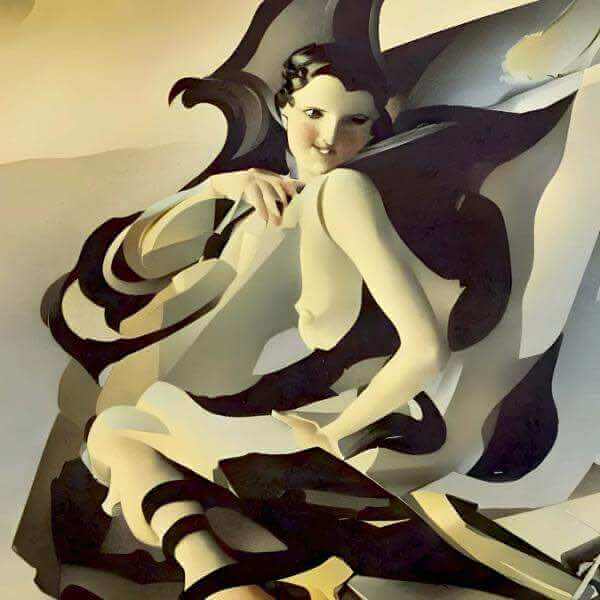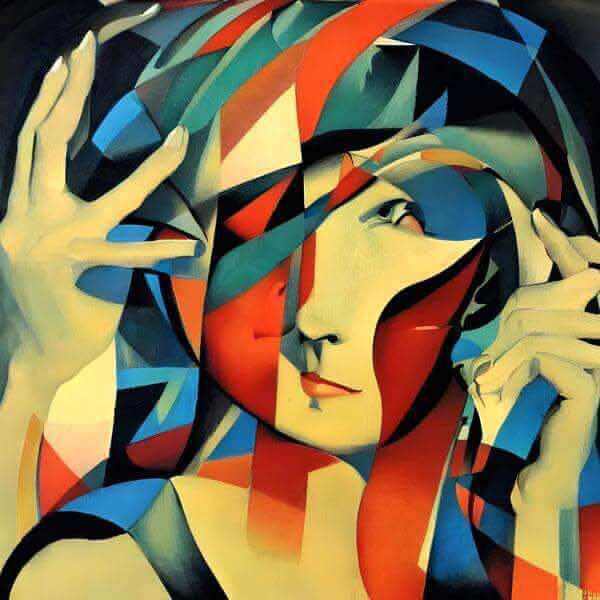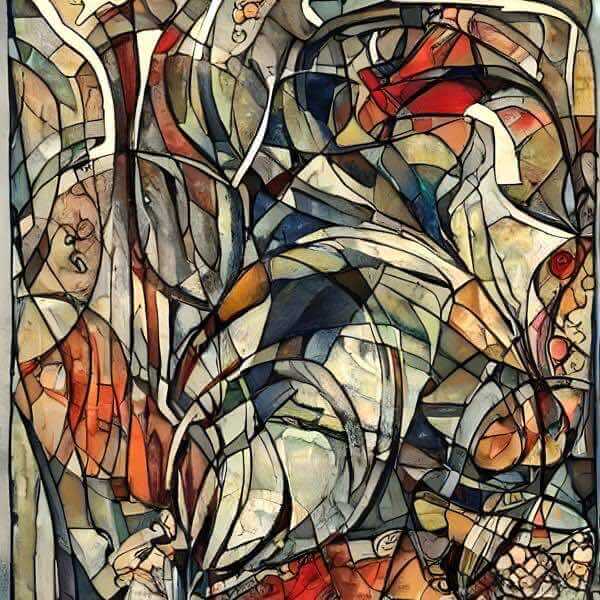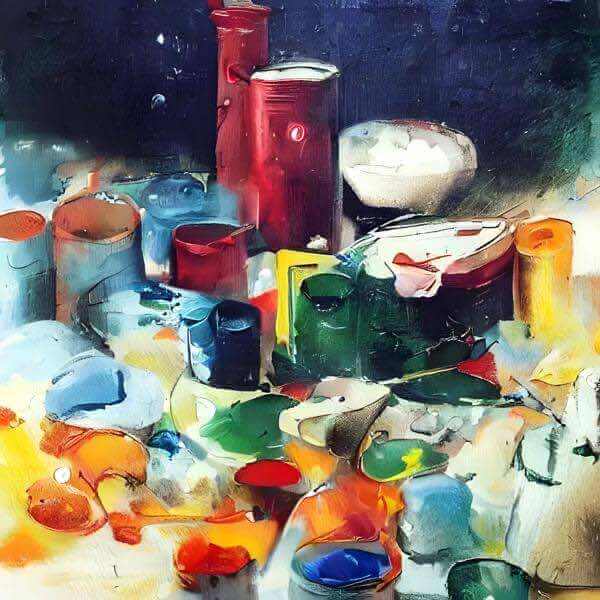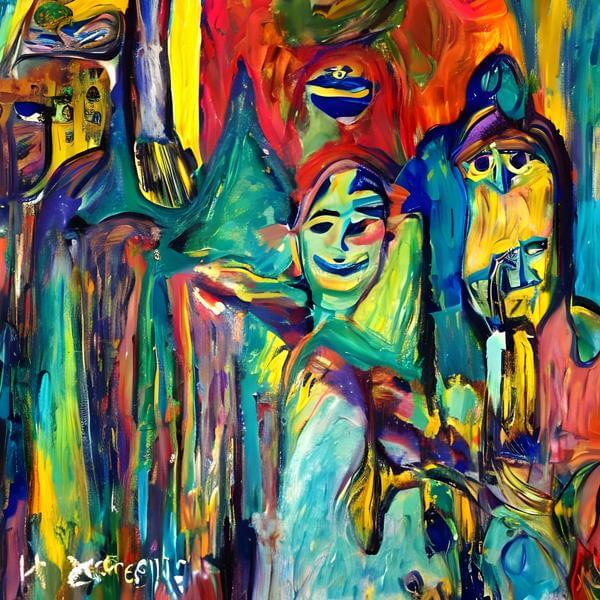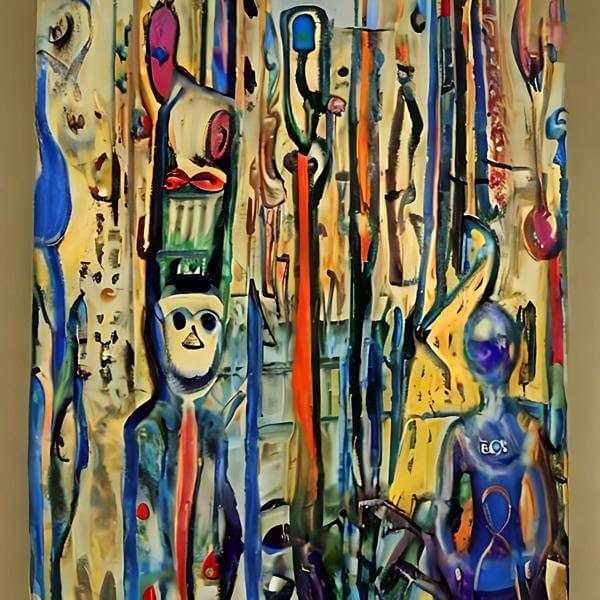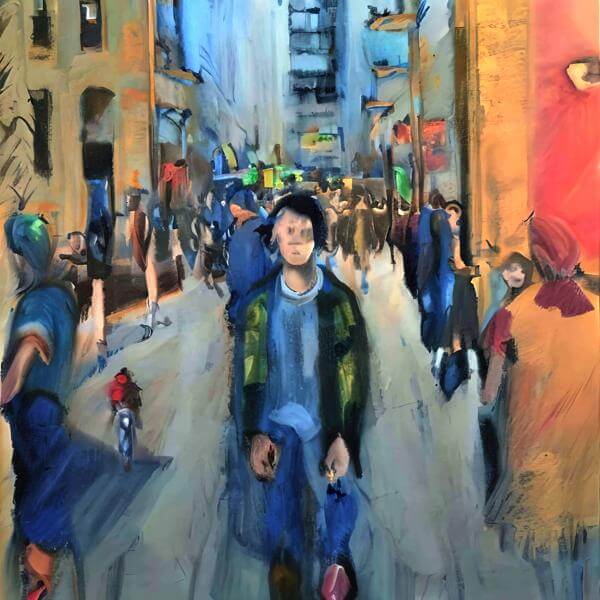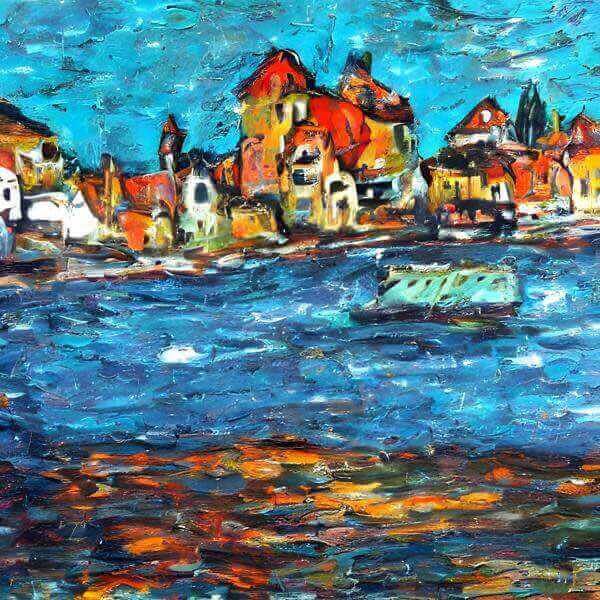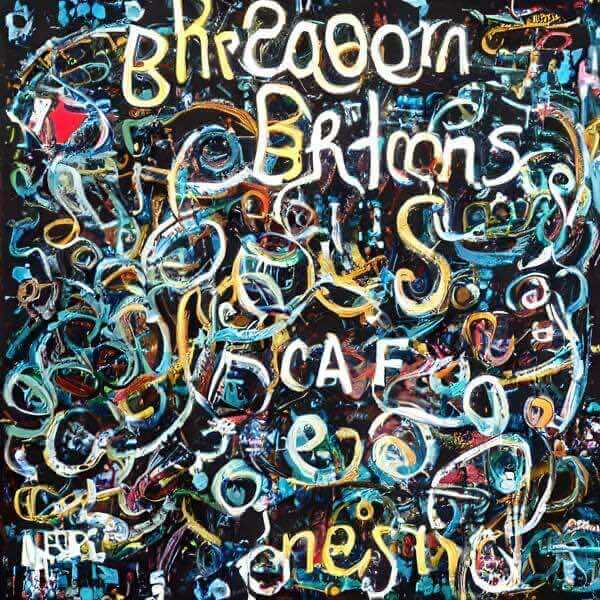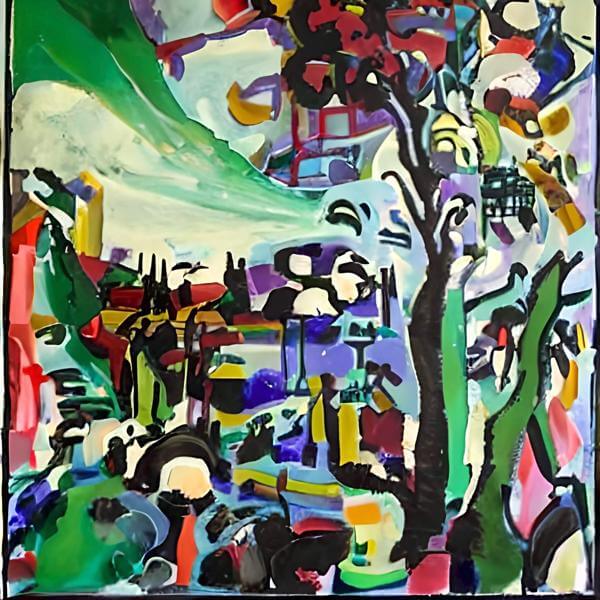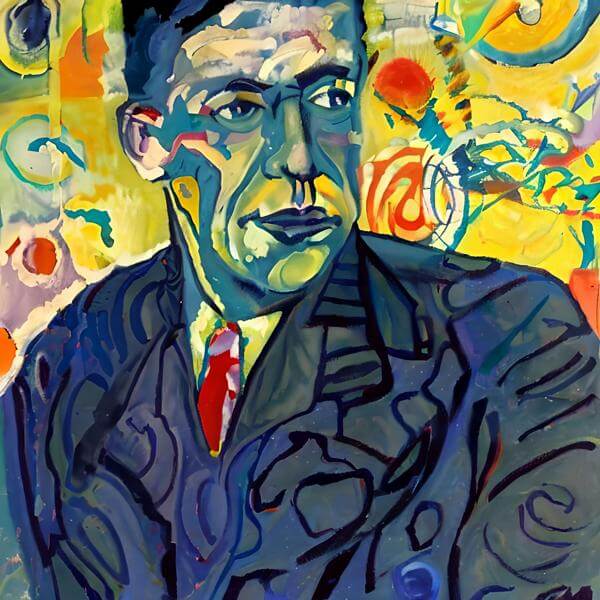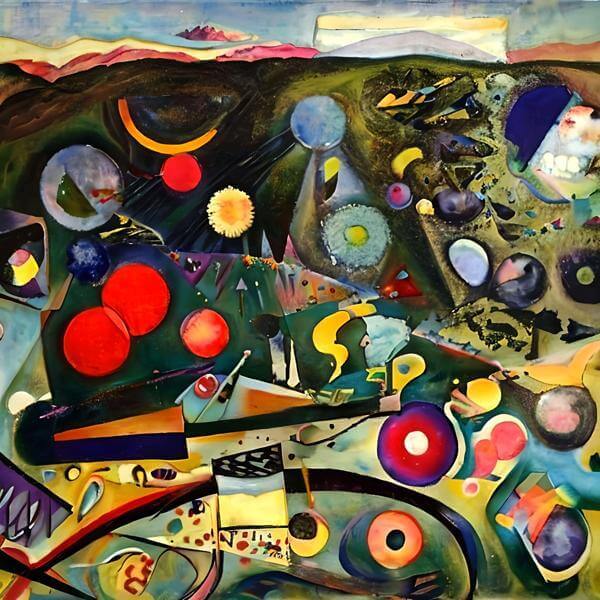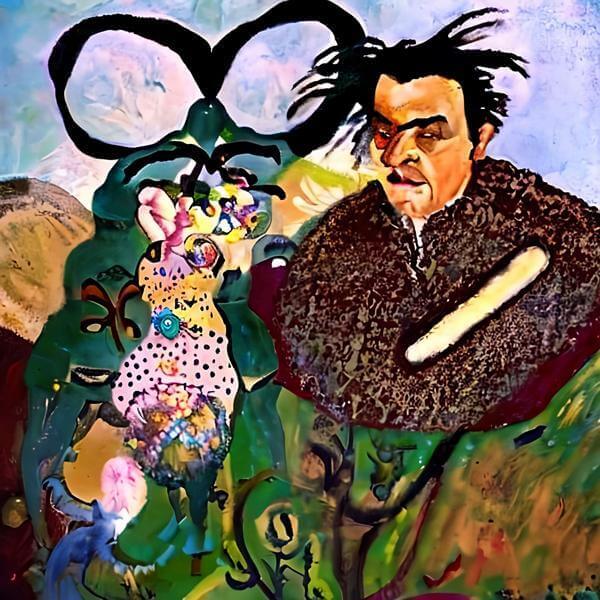🤖🖼 AI Art Blog ―To inspire AI to create paintings― 🅰🅸 🅰🆁🆃
A blog related to original AI artworks.
Generating Diverse Images with Minimal Words AI Painting (MWAIP) and Methods for Achieving Variation
On this site, we showcase images created by AI, particularly Stable Diffusion, with as short and minimalistic prompts as possible, typically consisting of only one word. We refer to this minimalist approach as Minimal Words AI Painting (MWAIP). In this article, we discuss methods for generating diverse images from short prompts, including removing or adding characters to the prompts and specifying related words in negative prompts similar to positive prompts.
Generating Diverse Images with Short Prompts -- Minimalism and Chance
To create a wide range of images through free imagination, it is believed that simpler instructions are better for AI. Therefore, we repeatedly use short prompts. For example, when the objective can be achieved by providing only the name of a painter, we do so. By simply repeating the name “Tullio Crali,” a painter from the 20th century (1910-2000), Stable Diffusion 1.5 produced various images that differed from Crali’s style. Here are some examples:
In Clary’s case, simply providing the name resulted in interesting images and a moderate level of diversity. I believe that creating images using only concise words is a form of minimalism. I named this approach MWAIP (Minimal Words AI Painting) and used it as the title of the website.
The generation of different images by repeating the same prompt is due to the AI being given random numbers. Random numbers are a means of introducing chance, which was used by composers of the 20th century like John Cage and Iannis Xenakis. In the case of AI art, the use of random numbers is inherent from the beginning, but MWAIP utilizes them as a means of introducing diversity. By changing the provided random numbers and generating images multiple times, the diversity of images is limited when a long prompt is given. However, when a short prompt is given and images are repeatedly generated, relatively diverse images can be obtained.
Adjusting Diversity - Managing Chance
You can adjust diversity or chance by changing the number of characters in the prompt, among other factors. Typically, you cannot generate images with an image AI without providing a prompt, but even with just one character, you can generate images. I have also attempted to generate images using only one alphanumeric character, as shown in the examples of using one character of the alphabet in “An Intriguing Art of Painting with a Single Alphabet in AI” and using numbers in “Plants and People Drawn by AI with Numbers.” However, with only one character as the prompt, there are not enough constraints, and the desired images may not always be obtained. Usually, it is necessary to impose some additional constraints (examples using two-character alphabets can be found in “When Providing 2 Alphabets to AI for Drawing, ‘AQ’ Shows Particularly Captivating Results,” and examples using numbers with two or more digits can be found in “Plants and People Drawn by AI Using Numbers”). In other words, a slightly longer prompt is required. This is how the prompt adjustment helps manage randomness.
In 20th-century music, the term “managed chance” was used, and here, a similar concept is realized by adjusting the prompt. However, there is a significant difference in that in 20th-century music, sounds were directly created from random numbers, while here, random numbers are used to provide “freedom” to the AI, creating a distinction.
Normally, adjusting the prompt involves adding words, but that would limit the images. In MWAIP, we needed a way to adjust the prompt while maintaining diversity. In Clary’s case, simply changing the values of random numbers when generating images worked well, but depending on the provided words, similar trend images may be obtained. This was the case with Kandinsky. When compared to the paintings Kandinsky created, many similar and less interesting images were generated. In such cases, methods that encourage diversity are necessary. The methods we have tried so far include modifying parts of the positive prompt and using negative prompts.
Prompt Transformation
There are two methods for modifying parts of the prompt: removing characters and adding characters. Let’s start with the method of removing characters. Depending on the prompt, removing the first or last character may result in completely different types of images or images with common elements. If there is little change, further character removal can be done. For example, with the prompts “Expressionism” and “Impressionism,” removing the first two characters results in both becoming the neologism “Pressionism.” When given to the AI, it generates rich and artistic images similar to “Expressionism” and “Impressionism.” Details are described in “AI Generates Diverse Images with ‘...ssionism’.” Here are examples of one image obtained from “Expressionism” and “Impressionism” each.
Here are two examples of images that can be transformed into “Pressionism” by removing one letter.
These images resemble those obtained from “Expressionism,” but upon closer inspection, you can notice some differences.
By removing more letters, they become “Ressionism” and “Essionism,” and AI generates images with slightly different tendencies. Here are a few examples:
You can perceive the differences in the images just by looking at the examples provided here.
Next, I will explain the method of adding characters. Adding one letter at the beginning or end of the prompt can result in completely different types of images or images with common characteristics. When it comes to numbers, adding them usually has a limited effect and can be used to encourage diversity. For example, by adding one letter to the beginning of “ressionism” and transforming it into “gressionism,” the following images can be obtained:
While mainly depicting landscapes with buildings, it also includes portraits and abstract paintings, unlike the patterns of “ressionism” and even more distinct from “expressionism” or “impressionism.”
When changing the added character to “bressionism,” the following image was obtained:
This image is quite different from those generated with any of the previous spellings.
As demonstrated with “gressionism” and “bressionism,” the removal and addition of characters can be combined.
Using Negative Prompts
Negative prompts are not given much emphasis in prompt engineering, but they can be effectively utilized to increase diversity and create intriguing artwork.
For example, as mentioned in “‘Negation’ Makes It More Attractive Kandinsky-style AI Art,” providing the term “Kandinsky” only as a positive prompt results in similar abstract paintings. However, when it is also given as a negative prompt, various styles of paintings are created. Here are just two examples, but more are available on the aforementioned page:
When “Kandinsky” is given as both a positive and a negative prompt, the AI that previously only produced abstract paintings diversifies its style and starts creating portraits and landscapes. It is unclear how negative prompts affect the AI, but perhaps the central aspects of the prompt are weakened while the peripheral aspects are emphasized.
Furthermore, providing words like “expressionism,” “impressionism,” or “abstraction” as negative prompts not only shifts the artistic style but also increases diversity. The following two images were generated with “abstraction” as the negative prompt:
Even if the prohibition of abstraction, abstract paintings are still created, but they tend to become more concrete, with a greater emphasis on subjects like people. This ability to obtain diverse results by providing related words as negative prompts may be due to the weakening of certain strong aspects of the positive prompt, allowing the emphasis to shift to peripheral elements.
In this case, we took the example of the artist name “Kandinsky,” but this effect can be observed not only with artist names but also with existing art movement names like “Expressionism” or coined art movement names like “Pressionism,” as described in “Diversifying Images by ‘Negating’ Art Movement Names.”
Dasyn.com デイシン
Created: 2023-05-20 00:50 Edited: 2025-10-31
